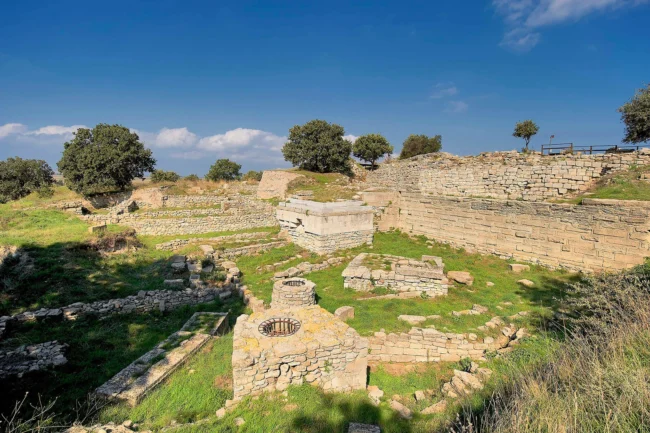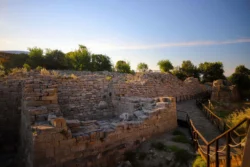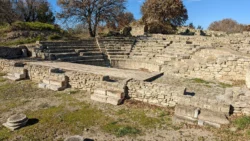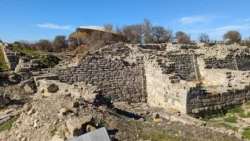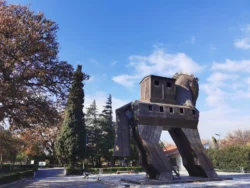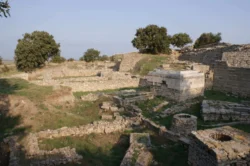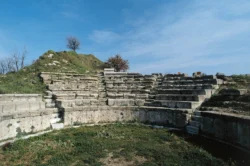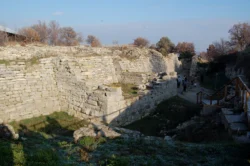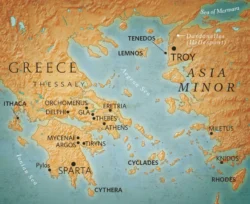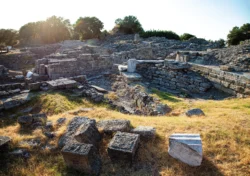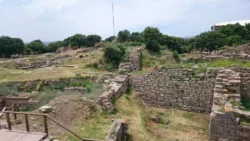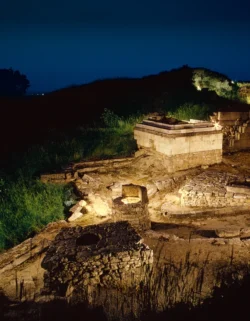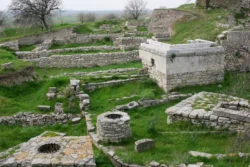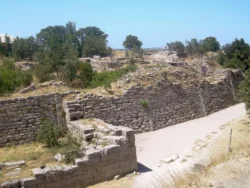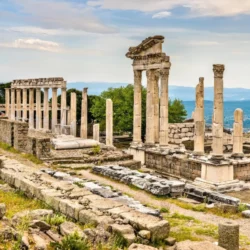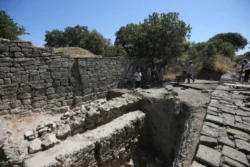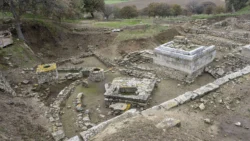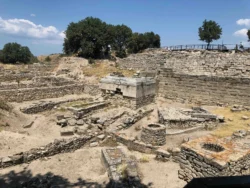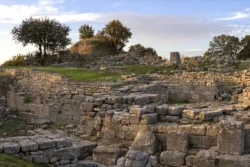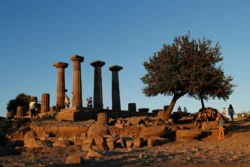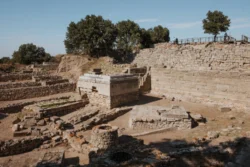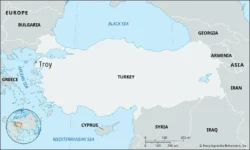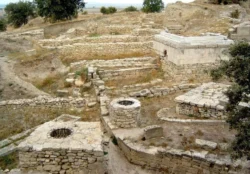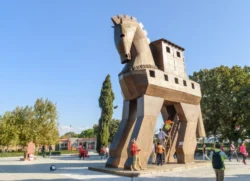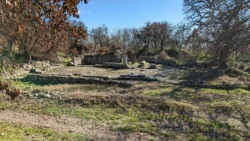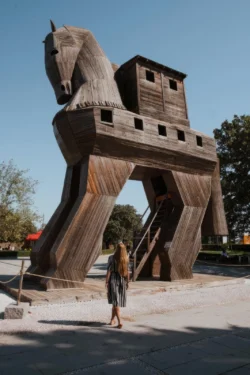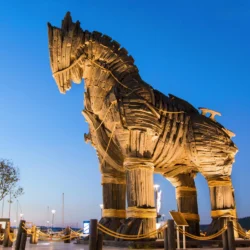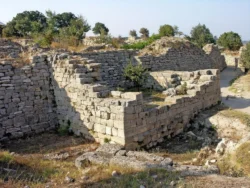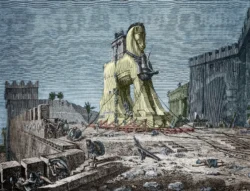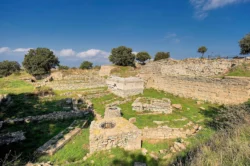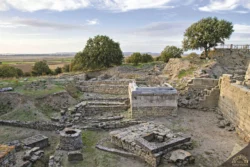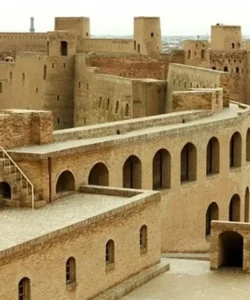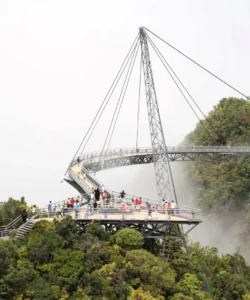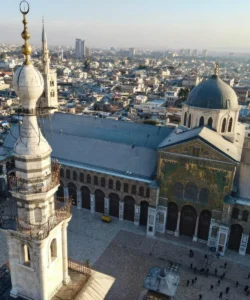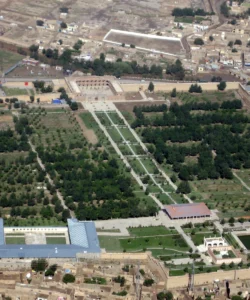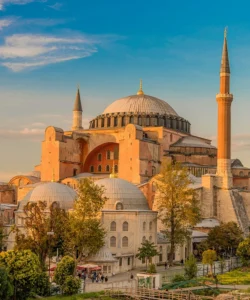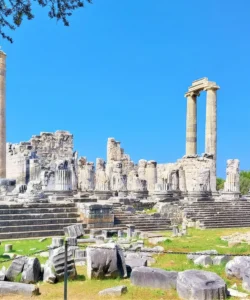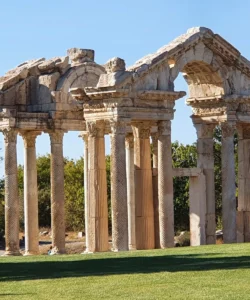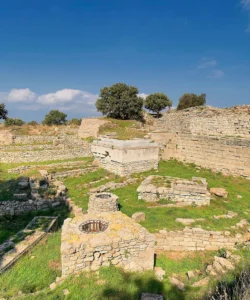The Ancient City of Troy is a legendary archaeological site in northwestern Turkey, famous as the setting of the Trojan War in Homer’s epic poems, the Iliad and the Odyssey. It is a UNESCO World Heritage Site that reveals a long history of human settlement, with multiple layers of ruins dating back over four millennia.
Listen to an introduction about Ancient City of Troy
Name
Ancient City of Troy (Turkish: Truva), also known by its ancient name, Ilion (Ίλιον).
Address
The archaeological site of Troy is located in the Hisarlık region of Çanakkale Province in northwestern Turkey, near the entrance to the Dardanelles Strait.
How to Get There
Troy is a popular tourist destination, often visited as a day trip.
- From Istanbul: The journey from Istanbul to Troy takes approximately 5 to 6 hours by car, including a ferry crossing of the Dardanelles. There are also organized bus tours that offer day trips.
- From Çanakkale: The modern city of Çanakkale is the closest hub to the site, located about 30 kilometers away. You can reach Troy by a local minibus (dolmuş), taxi, or a short drive.
Landscape and Architecture
The landscape of Troy is defined by its strategic location and the layers of a tell, or artificial mound, built up over thousands of years of human settlement.
- Multiple Layers of History: The site is not a single city but a complex archaeological tell with at least nine major layers of settlement, known as Troy I through Troy IX. These layers represent different historical periods and different cities built on the same spot.
- Fortifications: The most notable architectural features are the massive stone walls and towers that were part of the city’s defenses, particularly those from Troy VI and VII, which are believed to correspond to the city of Homer’s epics.
- The Trojan Horse: While the Trojan Horse itself is a legendary symbol with no archaeological evidence, a modern wooden replica of the horse stands at the entrance to the site, serving as a popular photo spot for visitors.
What Makes It Famous
Troy is famous for its legendary status and its archaeological importance.
- Homer’s Iliad: The site is globally famous as the setting of the Trojan War, a central story in Greek mythology. Homer’s epic poem, the Iliad, recounts the conflict between the Greeks and the Trojans, making Troy a place of immense literary and cultural significance.
- The Trojan War: The story of the Trojan War, the legendary siege, and the cunning use of the Trojan Horse by the Greeks has captured the imagination of people for centuries, making Troy a symbol of heroism, love, and betrayal.
- Schliemann’s Discovery: The site was famously excavated by Heinrich Schliemann in the 19th century, who used Homer’s texts as a guide. While his methods were controversial, his work brought the legendary city to the world’s attention and established modern archaeology.
- UNESCO World Heritage Site: Troy was designated a UNESCO site in 1998 for its exceptional role in understanding the evolution of civilizations in the Aegean region and its connection to a universally recognized work of literature.
Differences from Some Other Wonders (e.g., Petra)
While both Troy and Petra are major archaeological sites with ancient histories, they are fundamentally different in their nature and preservation.
- Construction Method: Petra’s monuments are a masterpiece of rock-cut architecture, carved directly into sandstone cliffs. Troy’s structures were built from stone and mud-brick, and what remains are mostly foundations and defensive walls.
- Preservation: Petra is exceptionally well-preserved, with entire monumental façades still intact. Troy, having been built and rebuilt many times, is a site of layered ruins and foundations, with a focus on understanding its stratigraphy and historical evolution.
- Legend vs. History: The fame of Petra is rooted in its historical role as a thriving Nabataean trade city. The fame of Troy is tied to a blend of verifiable history and a legendary, mythical event—the Trojan War—that is central to its identity.
Ancient City of Troy Photos:
